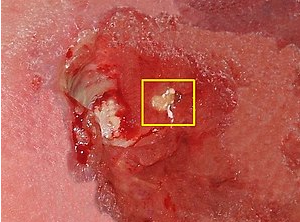Wounds, whether from injuries, surgeries, or chronic conditions, are a part of life. However, the journey to recovery can be accelerated and enhanced through the power of Platelet-Rich Plasma (PRP) therapy. In this blog, we will embark on a journey to understand the remarkable mechanisms by which PRP works for wound healing, transforming the way we approach recovery.
The Dynamic of Wound Healing
Before we delve into PRP’s role in wound healing, let’s explore the natural process that occurs when your body faces an injury or wound:
- Hemostasis: This is the initial phase where the body works to stop bleeding by constricting blood vessels and forming a blood clot.
- Inflammation: Inflammation is a crucial response that helps clean the wound and eliminate pathogens. Immune cells and growth factors are recruited to the site to protect against infection.
- Proliferation: During this phase, new tissue is generated, including blood vessels and collagen, to fill the wound site.
- Remodeling: The final phase involves the remodeling and strengthening of the new tissue, which can take weeks to months.
Enter PRP: The Healing Elixir
PRP therapy takes advantage of the body’s natural healing processes by enhancing and accelerating them. Here’s how PRP works for wound healing:
1. Preparation: PRP therapy begins with a small sample of your own blood. This blood is then processed in a centrifuge to isolate the platelet-rich plasma, which contains a concentration of platelets and growth factors.
2. Growth Factors: Platelets are responsible for clotting, but they also contain essential growth factors. These growth factors are like messengers that signal the body to initiate the healing process.
3. Accelerated Healing: When PRP is applied to a wound or injury site, it delivers a concentrated dose of growth factors directly to the area. This jumpstarts and accelerates the body’s natural healing processes.
4. Reduced Inflammation: PRP therapy has been shown to reduce inflammation at the wound site. This not only speeds up healing but also minimizes the risk of complications.
5. Enhanced Tissue Regeneration: PRP promotes the proliferation of new tissue, including blood vessels, collagen, and skin cells. This leads to improved wound closure and better scar formation.
6. Minimized Scarring: PRP therapy has the potential to reduce scarring by promoting the growth of healthier, more uniform tissue. It can also improve the texture and appearance of scars.
7. Pain Reduction: By facilitating faster healing and reducing inflammation, PRP therapy can lead to less pain and discomfort during the recovery process.
8. Personalized Healing: PRP therapy can be customized to address the unique needs of each patient and the specific characteristics of the wound or injury.
Conclusion: Nurturing the Healing Process
PRP therapy for wound healing is not just about quick fixes; it’s about nurturing and optimizing the body’s natural healing abilities. By harnessing the power of platelets and growth factors, PRP accelerates the healing process, reduces inflammation, and enhances tissue regeneration. This innovative approach offers hope to individuals recovering from injuries, surgeries, and chronic wounds, transforming the way we approach and experience the journey to recovery. So, whether you’re healing from a minor injury or a major surgical procedure, PRP therapy is a promising ally in your path to wellness.








